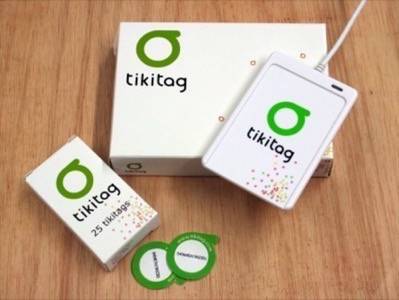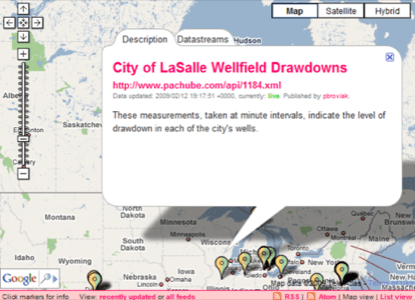The “internet of things” is a concept that describes a wireless network between objects. In a way, it parallels the current network of addressable web pages (aka the “world wide web”), except “the internet of things” would include addressable inanimate objects that could be anything from your home’s refrigerator to the shoes on your feet. Although this world of web-connected things has been much discussed for years, we’ve seen little movement pushing the concept forward. At least, until now.

Tikitag
Recently, we’ve seen a handful of companies attempting to develop technologies that could build an “internet of things.” One example is Tikitag, a company that presented at the DEMO 08 conference. With a Tikitag starter kit and some client software, you can program your own RFID tags so that they can do anything you want them to do. They can launch an application, deliver you to a URL, and so much more.

What’s great about Tikitag’s tags is that you don’t need a specialized RFID reader in order to scan them – they’re compatible with third party readers like NFC (Near Field Communication) enabled mobile phones. There are already over 40 million of these phones available and analysts expect over 250 millions to be sold in 2012.
You can get the Tikitag starter kit with one reader and 10 tags for 34.95 Euro + VAT/$49.95 U.S. Additional Tikitag RFID tags are sold for 19.95 EURO or $29.95 U.S.
Note: Tikitag will be operating under a new name come Monday.
Mir:ror
Mir:ror is a device from a company called Violet that detects the objects you show it and gives them powers. As you wave a device over the USB-attached mirror, you can trigger applications and multimedia content automatically. The “magic” mirror isn’t actually sensing the object itself, but is reacting to an RFID tag placed on the object which then tells your computer what to do.
Those tags are embedded in the company’s Ztamps, colorful RFID stamps that you stick on the objects you want to connect. They also work with the company’s other more well-known internet-connected object: the Nabaztag, an adorable rabbit that can deliver anything from ambient information through lights and sounds to verbal information – like when he reads your email or RSS feeds to you.
Pachube
Pachube is a service that lets you “tag and share real time sensor data from objects, devices, buildings and environments around the world. The key aim is to facilitate interaction between remote environments, both physical and virtual.” On their web site, you can either input a feed or use one of the feeds available. The feeds come from devices, buildings, or interactive installations that are already connected to the internet or that send out SMS messages. Also supported are Second Life installations.

By registering a feed on the site, you can share your real-time data with other objects, keep historical records of your data, or create online graphs to use in a web page.
Arduino
Arduino is an open-source electronics prototyping platform made up of open source hardware and software. It’s intended for artists, designers, hobbyists, and anyone interested in creating interactive objects or environments – that is, “the internet of things.”
For an example of the type of internet-connected objects you can build with Arduino, look at this presentation where the author configured a kid’s toy ray gun to react when anyone posted on Twitter about the #barcampliverpool hash tag.
Getting Started With Arduino How To Build A Twitter Monitoring Alertuino
View more
from
. (tags:
)
ZeroG Wireless
ZeroG Wireless is a semiconductor company that’s focused on building low-power wireless chips. Their low-power Wi-Fi chips can be embedded into any system including consumer electronics, smart energy devices, home and building controls, portable medical sensors, and sensor networks. The company was founded “based on the belief that a new paradigm of wireless connectivity is upon us. According to their web site, they envision a “4th Age of Wireless — the Internet of Things.”










